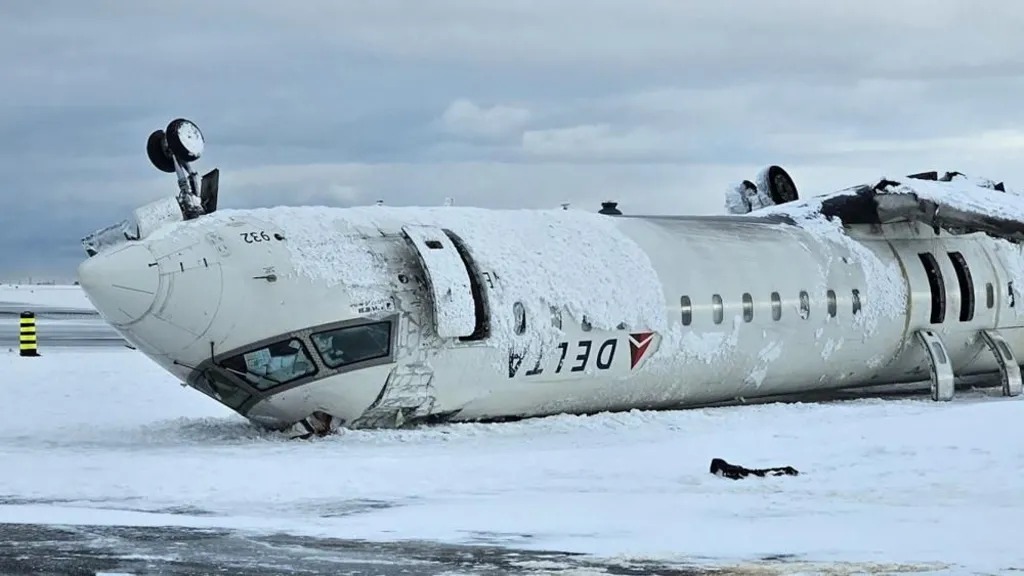
Toronto Plane Crash Shocks Survivors
The Toronto plane crash on Monday left passengers stunned as Delta Air Lines flight 4819 skidded, flipped, and burst into flames upon landing at Toronto Pearson International Airport. Miraculously, all 76 passengers and four crew members survived. Delta is now offering each survivor US$30,000 (£23,792) with no strings attached, preserving their legal rights. What caused this dramatic incident, and how did everyone escape alive? Investigations are underway, but early theories point to harsh winter weather and a steep descent.
The flight, departing Minneapolis, hit the runway hard, sliding amidst fire before resting upside down. Passengers recall a “forceful event” with sounds of “concrete and metal” clashing. One described hanging “like bats” from seats, yet most walked away unscathed. Delta’s swift response includes financial support and praise for the crew’s heroism.
How Safety Features Averted Disaster in Toronto Plane Crash
The Toronto plane crash could have been catastrophic, but advanced safety features saved lives. The Bombardier CRJ-900’s design allowed wings and tail to break off, preventing the fuselage from splitting and reducing explosion risks. Seats built to withstand 16G impacts kept passengers secure during the rollover. Experts credit these engineering marvels—alongside the crew’s training—for the outcome. Delta CEO Ed Bastian told CBS News the experienced pilots performed “heroically, as expected,” reflecting the airline’s safety focus.
Emergency responders acted fast, evacuating everyone from the smoky wreckage. Of the 21 hospitalized, only one remained by Wednesday, per Delta. The Transportation Safety Board of Canada (TSB), with U.S. support, recovered the black boxes—cockpit voice and flight data recorders—for analysis. While the cause remains unclear, footage suggests wind gusts and snow may have played roles. For more on aviation safety, visit BBC or explore Kenkou Land.
Main Body: Unpacking the Incident and Aftermath
Monday’s Toronto plane crash marks the fourth major North American aviation incident in three weeks, following a deadly Arizona collision on Wednesday. Despite this, experts like U.S. Transportation Secretary Sean Duffy insist air travel remains the safest transport mode, with each event distinct—no pattern exists. Delta’s $30,000 offer underscores its commitment to those affected, alongside ongoing support.
Passengers shared harrowing tales. One felt the plane hit “like a bomb,” while another marveled at surviving such chaos. The plane’s rapid descent and weather conditions—40 mph gusts after a weekend snowstorm—are under scrutiny. Aviation analysts suggest a flap actuator failure or pilot adjustments to shifting winds as possible factors. Yet, the intact fuselage and quick evacuation highlight why no lives were lost.
The TSB’s investigation will clarify the cause, but survivors’ resilience shines through. Delta’s Bastian emphasized safety as “embedded in our system,” a claim bolstered by this outcome. While air travel faces scrutiny after recent incidents, statistics show it’s safer than ever. Passengers can take comfort in robust designs and trained crews that turn potential tragedies into stories of survival.



